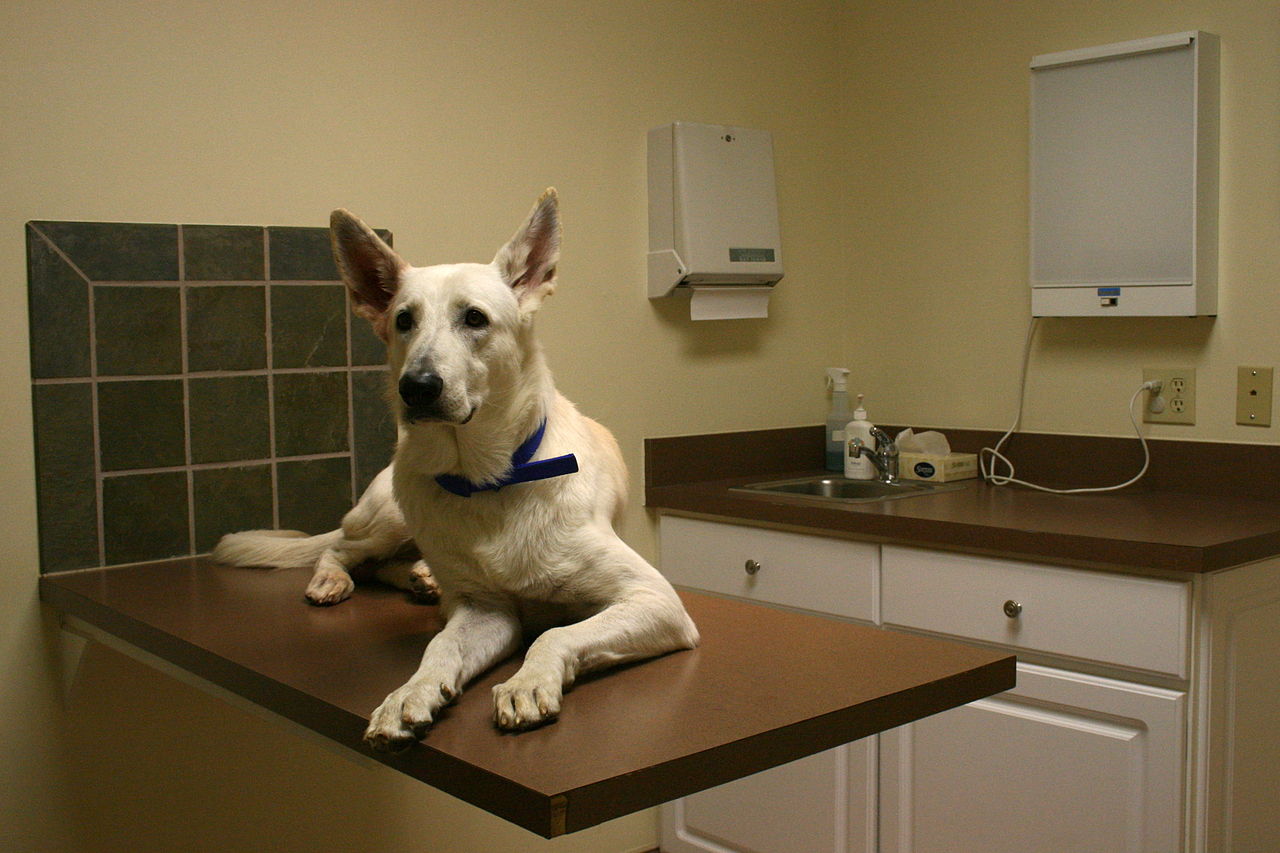The parathyroid glands are positioned on the thyroid glands. (Para is from the Greek meaning alongside). Both parathyroid glands are located at the front of a pet’s neck near the trachea just below the skin. The parathyroid glands secrete a hormone that regulates calcium and phosphorus levels in the body. They adjust the amounts entering […]
Dog Diseases
There are a number of diseases dogs are prone to and I’ll talk about some of them here. I’ll also try to include specific breeds of dog that are prone to certain illnesses and diseases.
I would advise you to be aware of your dog’s normal behavior. Signs of illness can be lack of appetite, decreased activity, weakness, not drinking much, not grooming, bad breath, sleeping more than usual, drooling, vomiting, diarrhea, coughing, trouble breathing, frequent and/or bloody urination. If your dog exhibits any of these symptoms or any behavioral changes and you are unsure of what to do, seek the advice of your veterinarian.
Things you need to know:
The normal color of a dog’s gums is pink. Pale, white, blue or yellow gums, contact your vet at once.
Normal temperature for a dog is 100-102.5 degrees Fahrenheit. Less than 99 degrees or over 104 degrees, contact your vet immediately.
A dog’s heart rate slows and speeds with each breath. This is not abnormal. You can check the heart rate by finding the femoral artery inside the back leg. Small dogs and puppies heart rate is 120-160 beats per minute. Dogs that are about 30 lbs. have a rate of 60-120 beats per minute. The larger the dog, the slower the heart rate.
A dog’s normal respiration rate is 10-30 breaths per minute. Panting can be up to 200 pants per minute.
To check if your dog is breathing, hold a tissue or mirror up to his nose. If there is movement or breath on the mirror, your dog is breathing, but get him to the vet immediately.
Problem signs are using the abdominals to breathe, gasping, loud noises, shallow breaths, difficulty exhaling. Call your vet immediately.
If you have any questions, I’ll be happy to answer them.
Note: Many new pet owners do not know about the availability of pet health insurance. Insurance for your dog is a great safety net to have for unforeseeable emergencies or illnesses. It is also helpful in covering routine shots and exams. Some plans start at just five dollars a month. To compare pet insurance plans in your area check out the link above.

Parvovirus
Parvovirus (CPV) is a highly contagious disease. There are a number of different strains and it is a common infection in the United States. It affects the intestinal tract of the dog. Parvovirus is spread through contact with feces of an infected animal and can survive on many items in the home including dog dishes, […]

Diskospondylitis
Diskospndylitis (discospondylitis, vertebral osteomyelitis), not to be confused with diskospondylosis which is a degeneration of the spinal column from any cause, is usually seen in middle-aged and older dogs and is the most common cause of back pain. While diskospondylitis (DS) is usually seen in large and giant male dogs, especially German Shepherd Dogs and […]

Duchenne Muscular Dystrophy in Dogs
Duchenne Muscular Dystrophy (DMD) is caused by a mutation in the distrophin gene which is located in the x chromosome. Distrophin is an essential part of muscle tissue. Deficiency or loss of the gene results in muscle wasting and eventually, death. After years of research, a study was conducted using a miniature version of this […]

Encephalitis in Pets
Encephalitis is an inflammation of the brain or spinal cord (myelitis) due to viral or bacterial infection, skull fracture, wounds, parasites or fungi. It may be idiopathic (unknown)and can be immune-mediated where the immune system attacks the brain or spinal cord. Symptoms depend on the area of the brain affected and can appear suddenly and […]

Osteogenesis Imperfecta in Pets
Osteogenesis Imperfecta, also known as Brittle Bone Disease, is a genetic disorder in which bones and teeth are very fragile. It is caused by a mutation of one of two genes for collagen, an abundant body protein which is the major component of skin, bones, cartilage, tendons and ligaments. Collagen is one of the main […]

Controlling Obesity in Cats and Dogs
Obesity in cats and dogs is becoming a major problem and a cause for concern. Surveys have shown that over 40% of America’s pets are overweight. We tend to show affection by lavishing our loved ones with food not considering the damage that can be done. But overfeeding our pets to the point of obesity […]

Zika Virus and Your Pets
The Zika virus is a mosquito-borne virus. It’s in the family of other viruses carried by mosquitoes such as West Nile virus, malaria, yellow fever, dengue fever and more. The Zika virus was first discovered in Uganda in 1947. It was found in a Rhesis monkey whose habitat was the Zika (overgrown) Forest. Little research […]

Eyelash Disorders in Dogs
Trichiasis, Distichasis and Ectopic Cilia are eyelash disorders that can occur in dogs. They may occur at any age or in any breed, but some breeds are more prone to the disorders. Trichiasis , also known as entropion, is when the eyelash grows inward towards the eyeball or cornea. Symptoms are abnormal eye twitchews, change […]

Colitis in Pets
Colitis is the term for inflammation of the large intestine (colon). Inflammation decreases water absorption so feces don’t remain in the colon causing frequent bouts of diarrhea sometimes with mucous and/or blood. Colitis has several causes, among them stress, infections, other illnesses, contaminated food, parasites, trauma, IBD (inflammatory bowel disease), contact with infected pets. Symptoms […]
